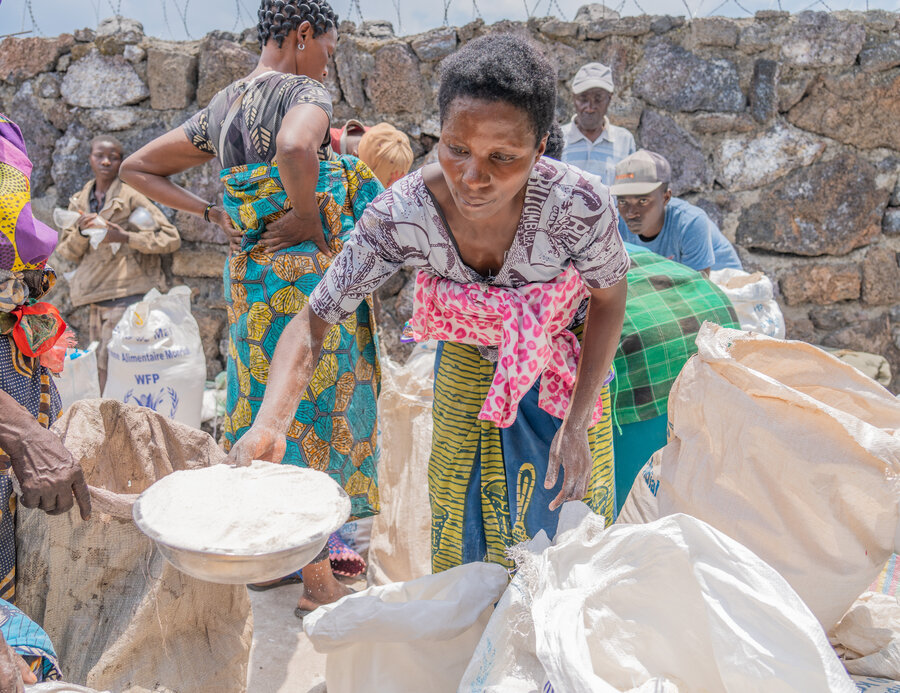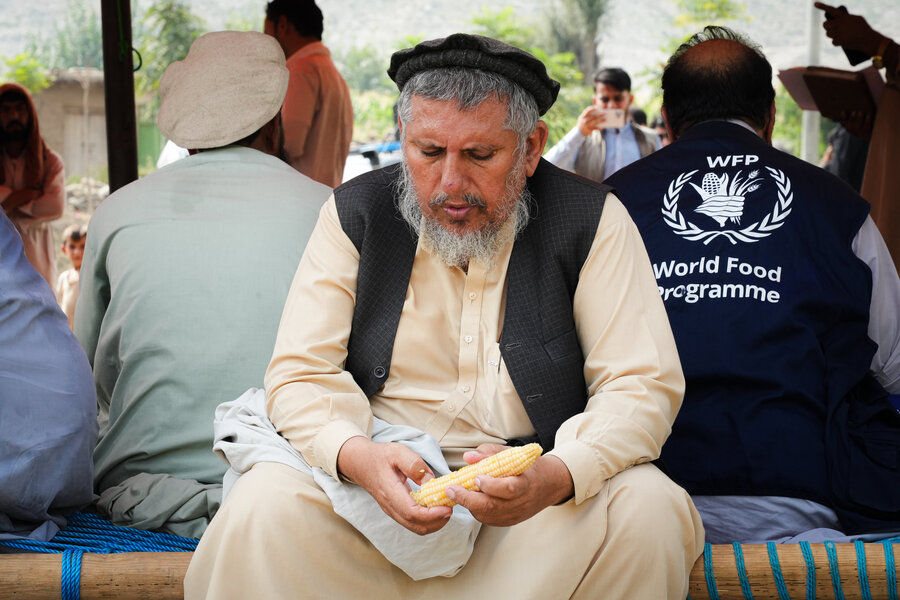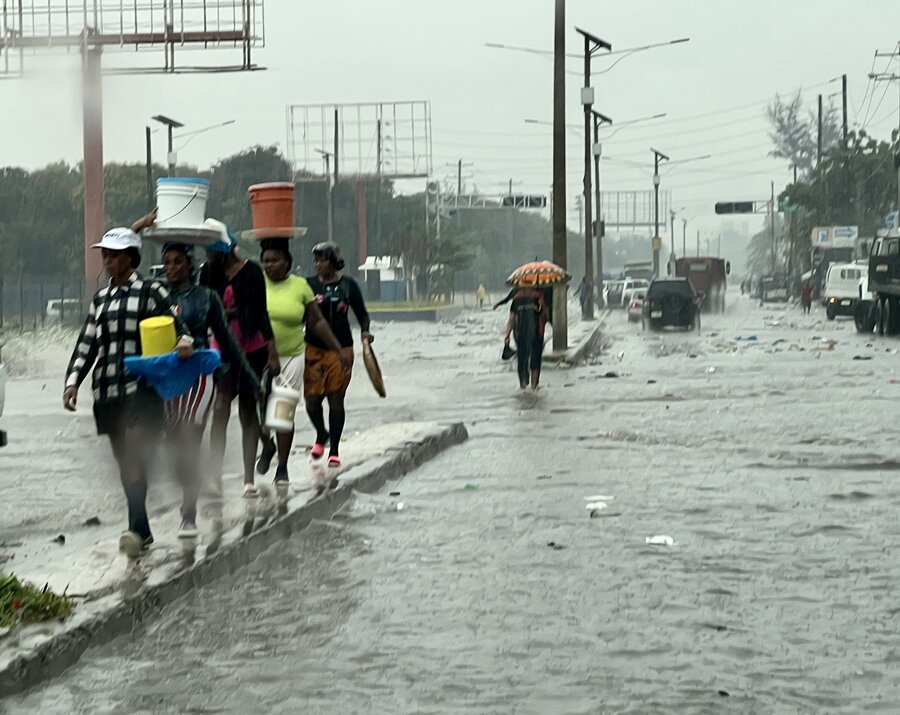Hunger report sounds alarm on emergencies at risk of going forgotten amid crisis in Palestine

The latest Hunger Hotspots report provides a telling reminder of critical humanitarian emergencies that risk falling under the radar while the world’s attention is on the conflict in Israel and Palestine.
In addition to Palestine – now added to the countries of highest concern – other countries highlighted at greatest risk of a serious deterioration in food security and possible starvation are Burkina Faso, Mali, South Sudan and the Sudan.
In total, urgent humanitarian action is essential in 18 hunger hotspots – comprising 22 countries or territories – according to the report jointly issued by the UN World Food Programme (WFP) and the Food and Agriculture Organization of the United Nations (FAO).
"Revealing the sobering truth"
“The risks identified in these countries of concern are alarming, revealing the sobering truth about what will happen if we don't act quickly to prevent further loss of life,” said Kyung-nan Park, Director of Emergencies for WFP. “Now more than ever, both emergency responses and preparedness are critical to prevent these deteriorations in food security."
The report warns that acute food insecurity is highly likely to worsen in Palestine during the outlook period of November 2023 to April 2024, due to the sharp escalation in conflict. Among its primary recommendations is endorsement of a plea from the United Nations Secretary-General for a ceasefire, and access to facilitate aid delivery to the Gaza Strip.
The conflict in Palestine reinforces a warning – also highlighted in the previous report published in May – that the trend of increased civilian targeting across different conflicts, and the growing number of actors using such tactics, is expected to continue throughout 2023. Conflict is one of the main drivers of hunger globally. Instability and violence continue to surge in the Sahel region, from coups in Burkina Faso, Mali and the Niger to the unabating conflict in the Sudan affecting neighbouring countries such as Chad. Between July and September 2023, the region accounted for 22 percent of all global fatalities generated by conflict.
Displacement in the Sudan continues at an alarming level
The magnitude and pace of displacement in the Sudan continue at an alarming level, disrupting food production and access, and affecting almost 5.6 million people as of mid‑September 2023. This includes 1.2 million people who have crossed the border into neighbouring countries – a sixfold increase over four months. Recommendations include increasing the provision of life‑saving food and nutrition, and continuing efforts to improve access to people in the Sudan who urgently need humanitarian support.
In South Sudan, insufficient crop production, high staple food prices and lack of resources to support the rising numbers of returnees from the Sudan are all expected to contribute to the persistence of critical food insecurity.
Eight countries are highlighted as being of “very high concern”, namely Afghanistan, the Democratic Republic of the Congo, Ethiopia, Haiti, Pakistan, Somalia, the Syrian Arab Republic and Yemen. These all have a high number of people facing or projected to face critical levels of acute food insecurity. Different factors, depending on the country – including conflict, climate-related disasters and economic slumps – are expected to intensify life‑threatening conditions in the coming months.
Food insecurity is being compounded by enforced ration cuts in several hunger hotspots of very high concern, due to lack of funding for humanitarian assistance. In Afghanistan for example, a shocking 10 million people have been cut off from life‑saving assistance due to a massive funding shortfall. Other countries affected include Haiti, Palestine, Somalia, the Syrian Arabic Republic and Yemen.
"Millions of people could be pushed further into hunger and to the brink of starvation"
"The current historic humanitarian funding crisis will inevitably impact these looming crises,” said Kyung-nan. “If WFP and humanitarian actors do not receive the funding needed to address them, millions of people could be pushed further into hunger and to the brink of starvation. The cost of inaction is catastrophic, especially for the most vulnerable. It is critical now more than ever for stakeholders to invest in preparedness and resilience programming so that communities are better prepared for these forthcoming climate, conflict, and economic shocks."

While funding lags, humanitarian needs remain high, also driven by factors including the lingering impact of the COVID-19 pandemic and the ripple effects of the war in Ukraine on global supply chains and food prices.
Several countries in Central America are expected to be hit hard by the El Niño weather pattern, with drought expected along the Dry Corridor in El Salvador, Guatemala, Honduras and Nicaragua, as well as in Malawi – all of which remain hunger hotspots.
"Weather extremes and disasters are becoming more and more prevalent and severe"
"We can't forget about the countries at high risk of experiencing climate-related impacts, as weather extremes and disasters are becoming more and more prevalent and severe,” said Kyung-nan. “This includes the predicted impacts of El Nino, and forecasted hurricanes, floods, and droughts across regions.”
While the impact of these are often unexpected and unpredictable, she added, warnings in the report could be used not only for emergency responses, but also to better prepare through anticipatory action that ultimately saves and lives and also costs."

In addition to emergency response measures, the report emphasizes the importance of such anticipatory action – short-term protective measures before new humanitarian needs materialize. In the Dry Corridor for example, this means providing early-warning messages of looming hurricanes and strategically positioning supplies to enable quick delivery.
In Malawi, it means distributing drought-tolerant seeds ahead of the planting season, along with hermetic grain storage bags. In South Sudan, this means providing forecast‑based cash transfers that help families mitigate the impacts of pending floods, for example if they have to evacuate their homes.
Urgent, scaled-up assistance is required across all 18 hunger hotspots
Chad, Djibouti, the Niger and Zimbabwe have all been added to the list of hunger hotspot countries and territories since the May 2023 edition, in addition to Palestine. Varying factors again include conflict, high food prices and climate effects.
Urgent, scaled-up assistance is required across all 18 hunger hotspots to protect livelihoods and increase access to food. This is critical to avert further deterioration of acute food insecurity and malnutrition, despite challenges due to insecurity, bureaucratic hurdles, and access constraints that all hinder safe and rapid assistance.
